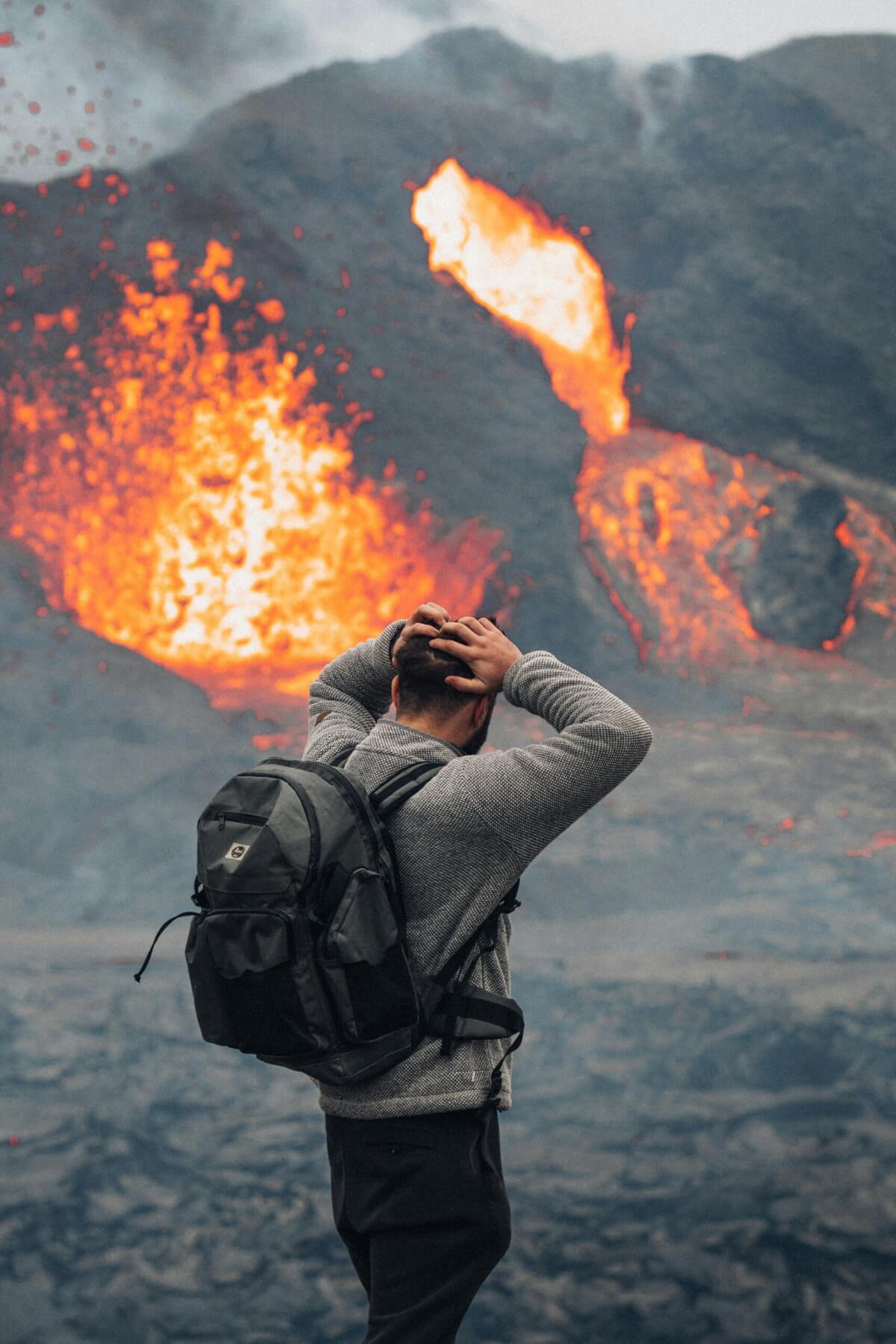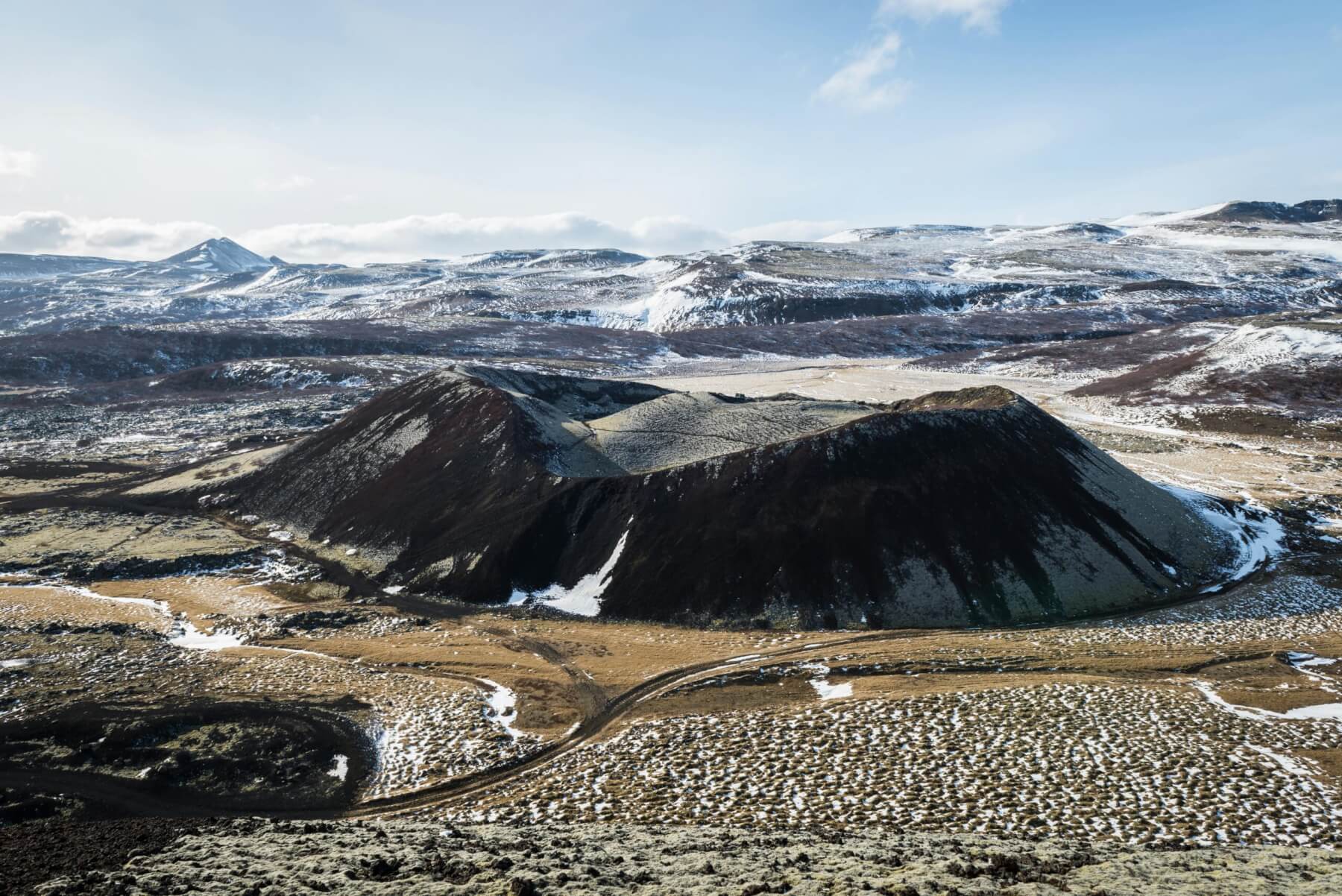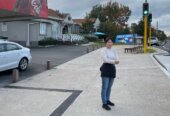We volcanologists love our terminology. Having specific words with defined, agreed upon meanings helps us to effectively communicate ideas, and compare events at different volcanoes and through time. Often though, the meanings are lost and jumbled when shared online and in headlines. “Fissure eruption” is something hitting headlines over the past few months as several eruptions have occurred in the Reykjanes Peninsula in Iceland, so let’s clear this one up.

Janine Krippner
If you have been watching the fissure eruptions in Iceland you may have noticed a pattern in how they progress, and you may have seen the same thing reported at volcanoes like Kīlauea in Hawaii. They begin when lava erupts from long cracks (fissures) in the ground that may or may not have been there before. These fissures are different to cracks that can form during unrest, where the deformation of the ground from magma moving below, this is what has happened through the town of Grindavik.
We call something a fissure once lava emerges from it. This can start out as small bubbling, or it can erupt violently as a lava fountain, where lava shoots high up into the air reaching potentially hundreds of metres or even several kilometres above the vent. A fissure can be one long fracture, or multiple fissures can occur close together.
Leading to a fissure eruption, magma moves towards the surface as a long sort of sheet that we call a dike or an intrusion. This can happen over many kilometres, making it difficult to know where exactly the eruption will occur. This is why we can get these eruptions occurring at multiple spots along a line, or through long fissures. Eruptions are always driven by what is happening below.

A man in gray jacket standing near an erupting volcano. Photo: Eriks Cistovs. Pexels.com
When lava fountaining is occurring across a long fissure, this can be called a “curtain of fire”, even though there is no fire involved. Remember that volcanoes don’t produce smoke either, the plumes we see above this type of eruption are often a mixture of volcanic gases and some ash (pulverised rock). These eruptions often don’t produce much ash. The 2010 Eyjafjallajökull fissure eruption that grounded flights across Europe was different because the lava mixed with glacial water to make it more explosive and fragment (blow apart) to form the ash. The gas, however, can cause issues.
The number and size of fissures can evolve throughout an eruption, like at Kīlauea in 2018 where 24 fissures formed in around three months. Activity usually eventually focuses in on one location and begins to form a spatter cone, where blobs or splashes of lava accumulate around one or more vents and lava flows from there. If you travel around somewhere like Iceland, you may see many smallish cones that might have formed in this way. Fissures can reactivate, like Fissure 8 at Kīlauea that led to around 22 square kilometres of land and hundreds of buildings being overrun by lava. There is never a good time to get complacent.
In Iceland we have been watching fissures open in different locations across months, with periods of inactivity between them. There has been speculation that there could be a series of these eruptions into the future, and hopefully this helps clear up a few of the words used to describe them. As always, my heart is with those being impacted by the eruption and we should always keep in mind that none of us are immune to disasters of the geological kind.

The Grabrokarfell Volcano in Iceland. Photo: MagicK, Pexels.com









